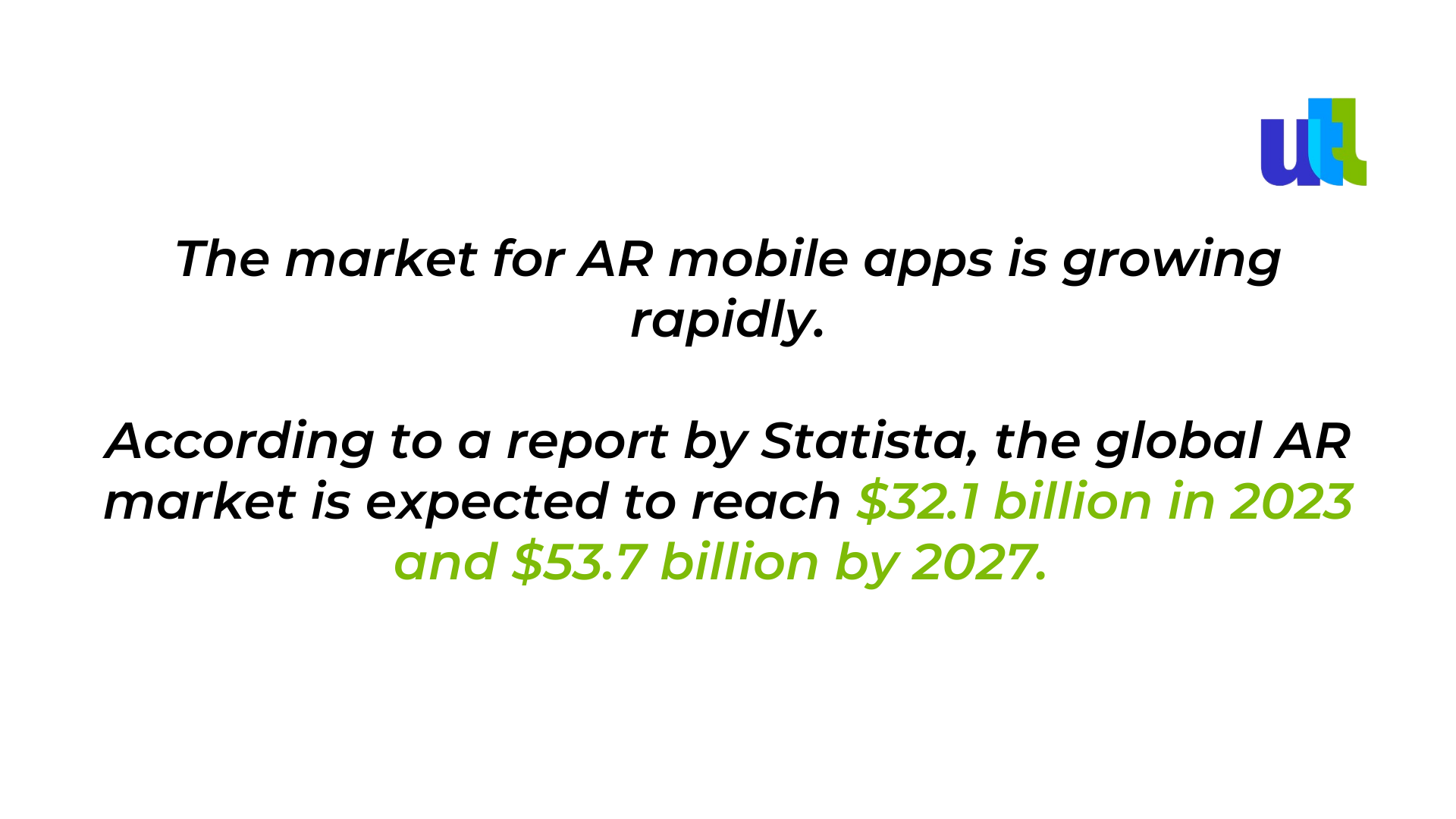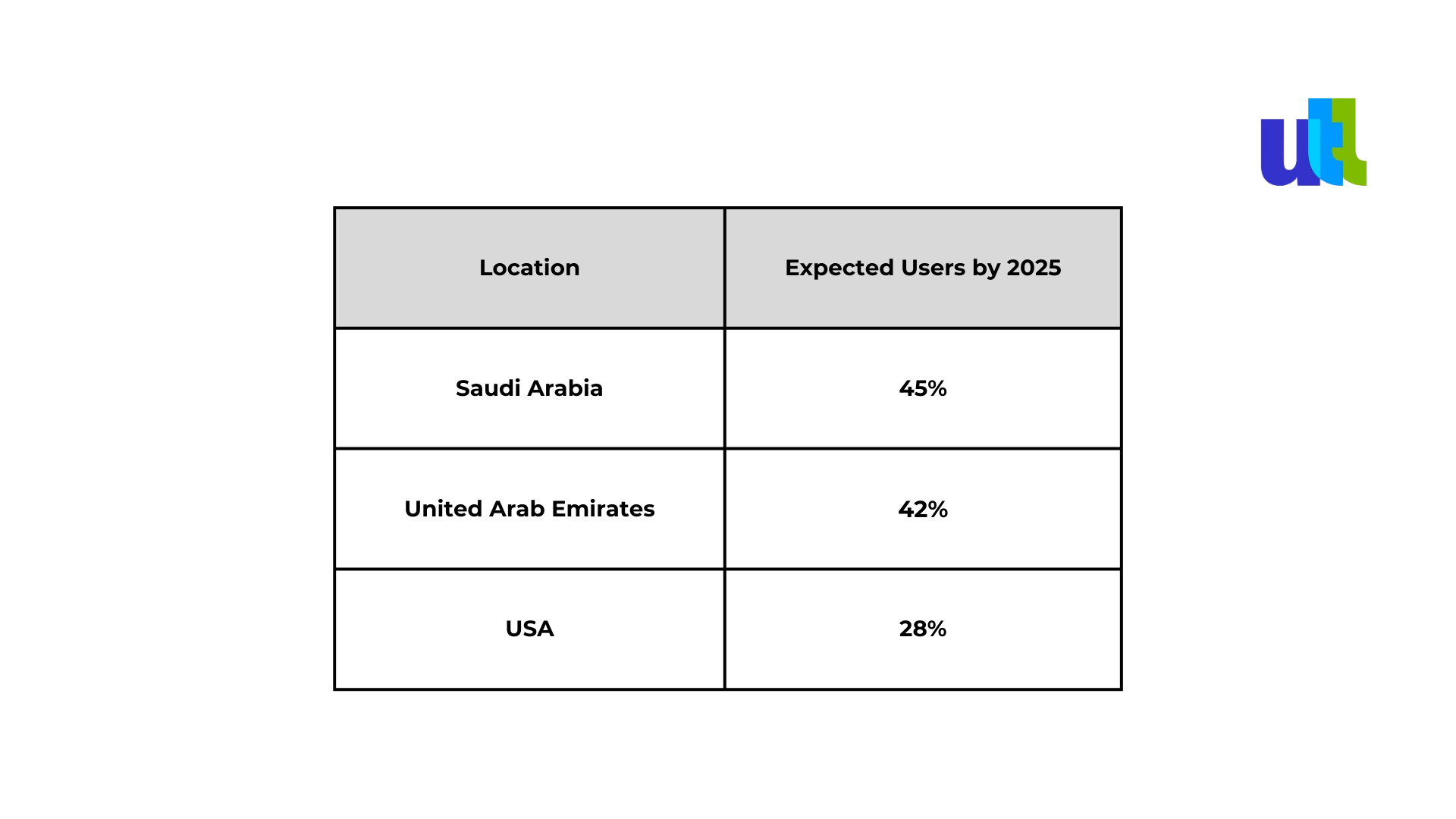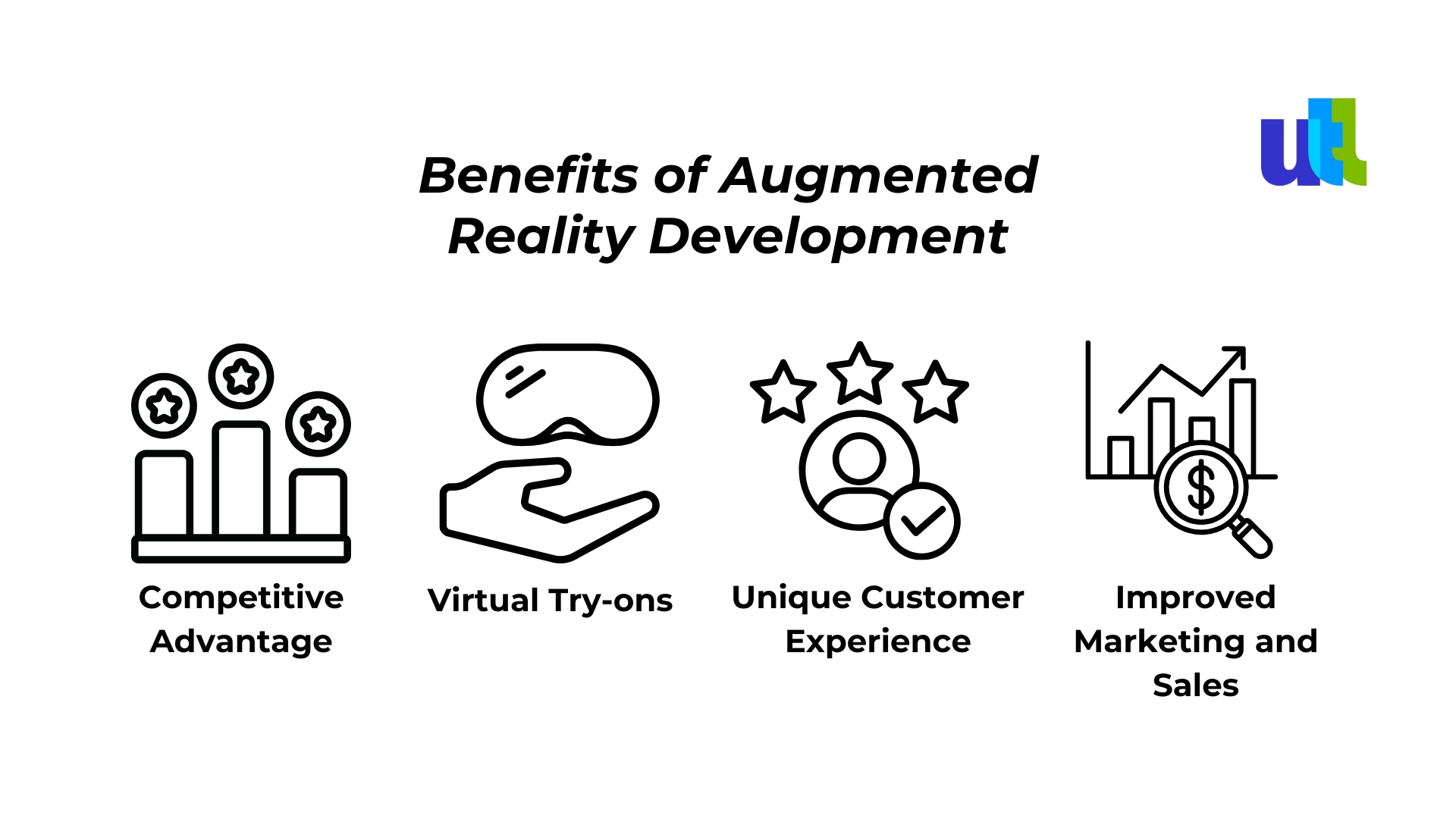Augmented reality (AR) is a rapidly growing technology with the potential to revolutionize many industries, including mobile app development. In this blog post, we will discuss the latest trends in AR mobile app development and provide insights on how to create a successful AR app.
What is augmented reality?
AR is a technology that covers digital information on the real world. This can be done in a variety of ways, such as using a smartphone camera, a headset, or glasses. AR apps can be used for a wide range of purposes, including gaming, education, navigation, and marketing.
Market trends in AR mobile app development

This growth is being driven by a number of factors, including the increasing availability of AR-enabled devices, the development of new AR technologies, and the growing demand for AR apps from businesses and consumers.
How to create a successful AR mobile app
When developing an AR mobile app, it is important to keep the following tips in mind:
- Choose the right platform. AR apps can be developed for a variety of platforms, including smartphones, tablets, and headsets. It is important to choose the platform that is most appropriate for your target audience and the type of AR experience you want to create.
- Use high-quality assets. AR apps rely heavily on visuals. It is important to use high-quality 3D models, textures, and animations to create a realistic and immersive AR experience.
- Make sure your app is easy to use. AR apps should be easy to navigate and use. Avoid using complex controls or gestures.
- Provide a clear value proposition. What does your AR app do that other apps don't? Why should users download and use your app? It is important to have a clear value proposition for your AR app.
Top features your augmented reality app should have
When developing an AR app, it's important to consider the key features that can make your app stand out and deliver the desired benefits.
Robust object recognition
The ability to accurately recognize and track objects and environments is essential for any AR app. This allows the app to overlay digital information onto the correct parts of the physical world. For example, an AR app that helps users place furniture in their home needs to be able to recognize flat surfaces and understand the user's perspective.
Real-time performance
AR apps must perform in real time to create a truly immersive experience. Any lag between the user's actions and the app's response can break the illusion and create a frustrating user experience. It's important to optimize your AR app for performance and ensure that it can deliver fast and responsive interactions.
User-friendly interface
AR apps can be more complex than traditional apps, so it's important to design a user-friendly interface that makes it easy for users to navigate and interact with the app. This might include using intuitive gestures, providing clear instructions, and keeping the design simple and clean.
High-quality graphics
The quality of the virtual elements in an AR app can significantly impact the user experience. High-quality, realistic graphics can make the AR experience more believable and enjoyable. Investing in high-quality graphics is particularly important for AR apps that are used for entertainment purposes, such as games and educational apps.
Contextual information
One of the strengths of AR is its ability to deliver contextual information. This means that your AR app can provide information that is relevant to the user's current situation or environment. For example, an AR app that helps users navigate a city could provide information about nearby landmarks and businesses.
Cross-platform compatibility
With the increasing popularity of AR, there is a wide range of devices that can support AR apps. To reach a wider audience, it's beneficial to design your app with cross-platform compatibility in mind. This means ensuring that your app can be used on a variety of devices and operating systems, such as smartphones, tablets, and smart glasses.
There are four main types of augmented reality apps:
- Marker-based AR apps: These apps use image recognition to identify and track physical markers, such as QR codes or printed images. Once a marker is detected, the app overlays digital information on top of it.
- Location-based AR apps: These apps use GPS and other location sensors to determine the user's current location and then overlay digital information onto the real world based on that location. Pokémon Go is a popular example of a location-based AR app.
- Projection AR apps: These apps use visual odometry to track the user's movements and then overlay digital information onto the real world based on that information. Projection AR apps are often used for industrial and commercial applications, such as car parking systems and construction planning.
- Superimposition-based AR apps: These apps use computer vision to process and recognize real-world images. Once an image is recognized, the app can overlay digital information on top of it. Superimposition-based AR apps are often used for medical and educational applications.
A global phenomenon with Saudi Arabia, UAE, and USA leading the way
Augmented reality (AR) is rapidly gaining traction around the world, with Saudi Arabia, the United Arab Emirates, and the United States leading the way. According to a recent study, 45% of shoppers in Saudi Arabia will have used AR-enabled applications by 2025, followed by 42% in the UAE and 28% in the USA. (Source: Tekrevol)

This trend is being driven by a number of factors, including the increasing availability of AR-enabled smartphones and tablets, the growing popularity of online shopping, and the rising demand for immersive and interactive customer experiences.
Businesses across a wide range of industries are seeing the potential of AR and are developing innovative new applications for the technology. For example, retailers are using AR to allow customers to virtually try on clothes and accessories before they buy them. Furniture companies are using AR to help customers visualize how new pieces of furniture would look in their homes. And automotive manufacturers are using AR to provide customers with interactive tours of new vehicles.
Benefits of building augmented reality apps for businesses
Building AR apps can offer a number of significant benefits for businesses, including:
- Competitive advantage: AR can help businesses differentiate themselves from their competitors and offer their customers a unique and innovative experience.
- Virtual try-ons: AR can allow customers to virtually try on products before they buy them, which can lead to increased sales and reduced returns.
- Improved marketing and sales: AR can be used to create engaging and interactive marketing campaigns and sales presentations.
- Unique customer experience: AR can be used to create unique and memorable customer experiences that can help businesses build stronger relationships with their customers.

The future of augmented reality apps
Augmented reality (AR) apps are poised to transform various sectors, impacting the way we work, play, learn, and connect with the world around us. As we look to the future, the potential of AR apps is boundless.
One of the most exciting aspects of AR's future is the development and widespread adoption of wearable AR devices. While smartphones and tablets currently dominate the AR space, the shift towards more immersive and hands-free experiences via AR glasses and headsets is underway.
AR apps are also set to play a crucial role in the advent of the metaverse, a collective virtual shared space created by the convergence of physical and virtual reality. In the metaverse, AR apps could enable users to interact with this space without being completely detached from the real world, enriching our interactions with both the physical and digital worlds.
For example, AR apps could be used to create virtual avatars that represent us in the metaverse, or to allow us to interact with digital objects and environments in a more natural and immersive way.
If you're looking for a solution to help you develop a successful AR app, contact UtahTechLabs today. We offer a wide range of AR development services, including custom app development.
For free consultation on augmented reality in mobile app development, click here.
----------------------------------------------------------------------------------------------
View the full presentation:
WRITTEN BY
Milda Butkeviciute
2023-11-17


































































































































































































